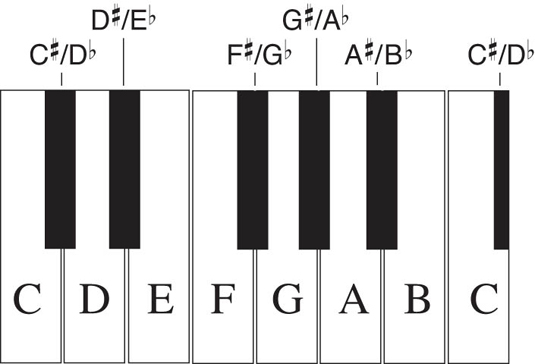

It's just sharing instrument frequency ranges in a pretty fashion. I'll admit that this one simply presents information without making any suggestions about using it for equalization purposes. If that sounds like a good idea to you, then you'll probably love this equalization cheat sheet they made: The first is from LANDR, a company that uses algorithms to 'read' your song and apply presets to master your music for a couple bucks per track. Let's look at a few of these monstrosities.
#MUSIC KEYS CHEAT SHEET PROFESSIONAL#
They serve one purpose, which is to sabotage your ability to mix music on a professional level. Most of the time, all or large portions of this information on these graphics are inaccurate and useless, but they seem sophisticated and insightful to newcomers due to the vast amount of info crammed onto them in an admittedly attractive format. They also provide tips regarding fundamental and harmonic frequencies, subjective sounds like 'squeek' and 'presence,' and even information on the influence of certain types of microphones when recording. What Is An EQ Cheat Sheet?Īn EQ cheat sheet, also called an instrument frequency chart or an audio frequency chart, is an infographic that displays the supposed frequency responses of every common instrument laid out across the frequency range of human hearing.
#MUSIC KEYS CHEAT SHEET HOW TO#
Let's understand exactly what these charts are supposed to be achieving and then explain specifically the problems they create and how to actually solve these issues. You never gain freedom from the tyranny of the teacher. You have to continue looking at the chart because the information isn't specific enough to learn from, so your typing speed never increases because you never learn to not look at the keys and at the chart. Not only is that a disaster but it traps you. But the images only say "the letter you're looking for is somewhere in this area on one of these keys and here's a nickname for the letter instead of the actual name for the letter."

Of course you have to look at an image of a keyboard first to begin learning where each letter is situated. Imagine being taught to type on a computer keyboard.

Here's an analogy of how bad this is before we get into the specifics. This carries over from the cheat sheets on to the user interfaces on parametric equalizer plugins, the volumes bouncing on fader meters, the graphs of gain reduction on compressors, and more. The main issue with these types of charts are the effect they have on the amateur mixer who honestly is attempting to learn and increase his or her skill level.ĮQ cheat sheets teach the worst possible technique to a mixing engineer - they teach you to mix with your eyes instead of your ears. Lots of newcomers to the world of equalization and mixing encounter these charts, and we need to set the record straight. Below, we'll show you a few examples of these kinds of audio frequency charts and explain the problems with them. In the cases where the information is accurate, it's usually unusable or should be avoided. It turns out that these are just marketing images made by people who likely haven't mixed a song in their life. not the chart, but the fact that every piece of data on it is subjective, changes based on the recording techniques, and some of it is flat out untrue. So you consult a different chart that doesn't mention 'honk' at all, but you do learn that the 'woof' of a saxophone exists in the range of 200 Hz to 300 Hz, which has a little crossover with the 'boom' and a lot of crossover with 'mud.' First off, what is the sound of a 'honk' and why does it exist in such a broad range of frequencies? They then go on to tell you that the 'honk' of a saxophone occurs 'somewhere' between 150 Hz and 550 Hz. Your first clue that these abominations suck are the instrument frequency charts that purport to show the fundamental frequency ranges as well as the harmonics of every common instrument you might mix.
#MUSIC KEYS CHEAT SHEET FULL#
Halfway interested amateurs pass them around because they seem profound and packed full of useful information. They're designed well and make nice posters for a school classroom.


 0 kommentar(er)
0 kommentar(er)
